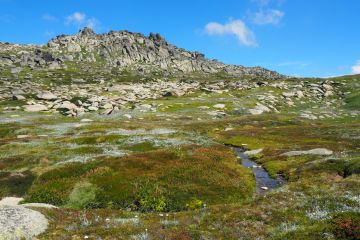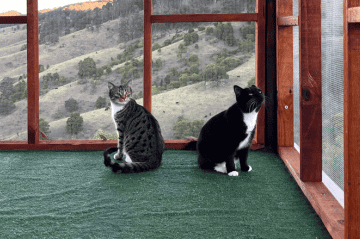The Invasive Species Council welcomes the NSW government’s announcement of a commitment to develop a new Nature Strategy that will be enshrined in law, and calls for ambitious targets and funding to address the pest and weed crisis in the state.
‘We welcome the important commitment to develop a NSW Nature Strategy and are pleased that it will be enshrined in law with targets for landscape restoration, threatened species recovery and addressing threats to nature,’ Andrew Cox, CEO Invasive Species Council said.
‘The latest NSW State of Environment report clearly identified invasive species as the highest impact driver of extinctions in the state, directly endangering 70 per cent of threatened wildlife and ecosystems in NSW.
‘The success of the proposed strategy will therefore depend on developing ambitious targets, backed by long term funding for invasive species management and environmental biosecurity.
‘This will be informed by the invasive species review being conducted by the NSW Natural Resources Commission that is set to report in the coming months.
‘NSW is facing an invasive species crisis due to the cumulative effect of recent natural disasters, climate change, and a lack of a clear, long term funded strategy.
‘On top of this, our frontline pest and weed agencies are understaffed, underfunded and have been under enormous pressure over the last four years as they responded to fire, drought, floods, fire ants and an explosion in feral animal numbers.
‘Invasive species degrade and damage waterways and bushland, kill native wildlife and prevent regeneration.
‘Weeds like lantana and madeira vine smother our native plants, feral foxes and cats prey upon our birds and small mammals and streams and wetlands are being trampled by hard-hoofed feral deer and horses.
‘New threats on our doorstep like fire ants, the deadly H5 strain of bird flu or tilapia fish could cause new extinctions if they make it into NSW.
‘Invasive species are also a direct threat to First Nations’ cultural heritage and connection to Country. Weeds, feral animals and other pests lead to the destruction of sacred sites and cultural landscapes and the extinction of Indigenous totem species.
‘We are ready to work with the NSW government to ensure this proposed strategy is ambitious and leads to meaningful change.’
Background:
- The Invasive Species Council has released a comprehensive policy platform, Combating Invasive Species: Priorities for the NSW Government, which identifies policies, funding and reforms needed to strengthen the biosecurity system and address key environmental threats from pests, weeds and exotic diseases.
- The recent NSW State of the Environment report found that the health of NSW’s environment is in significant decline, invasive species threaten more than 70% of threatened species and endangered ecological communities and the spread of emerging invasive species is getting worse.
- In addition to the environmental impact, weeds in NSW account for at least $1.8 billion a year in lost production and pest animals cost the NSW economy more than $170 million every year.
- Every year feral and pet cats in Australia kill over 1 billion mammals, 400 million birds, 600 million reptiles and 90 million frogs.
- The feral deer population has grown tenfold in the past two decades to around 2 million animals and is spreading in NSW at a rate of about 1 million hectares per year.
- Feral goats, horses, pigs,cats, weeds, fire ants and invasive diseases like myrtle rust have all been recognised as key threatening processes under the NSW Biodiversity Conservation Act.








